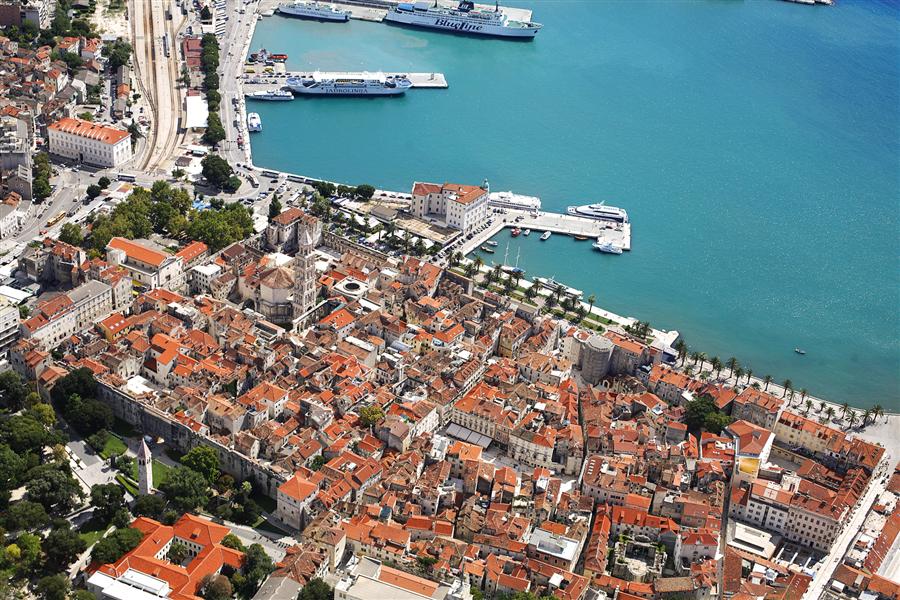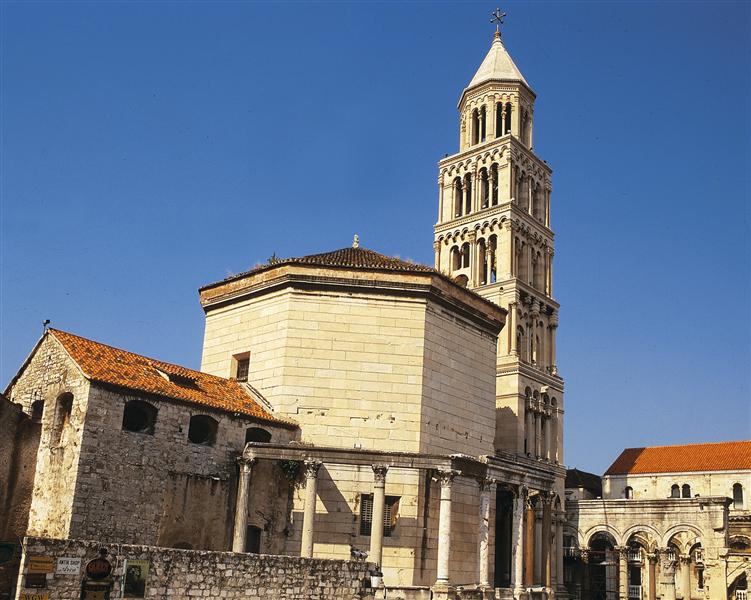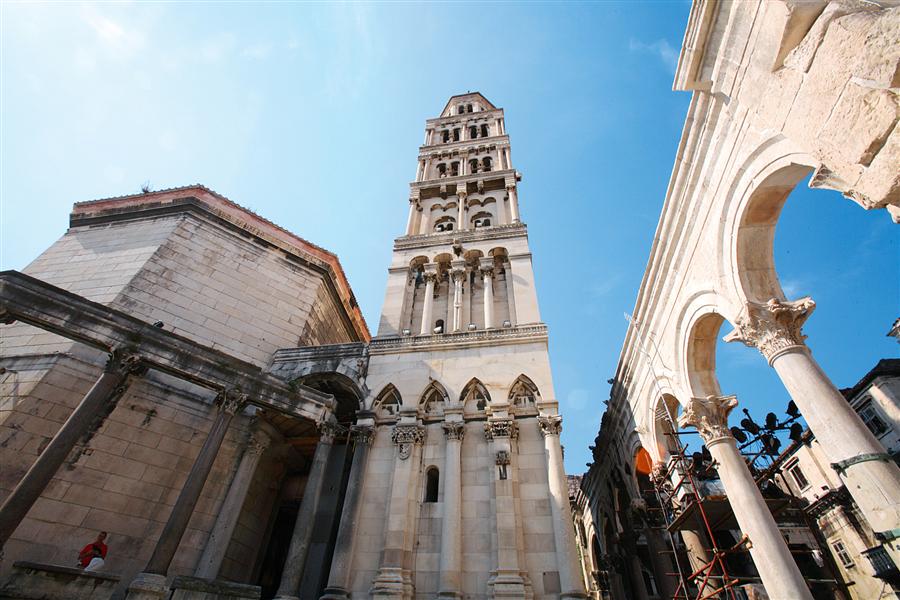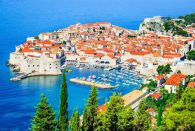You are here: ![]() > Trogir
> THINGS TO DO
> Heritage
> Diocletian`s Palace
> Trogir
> THINGS TO DO
> Heritage
> Diocletian`s Palace
Diocletian palace
The central part of the city of Split is a whirl of narrow stone streets, ancient monuments and medieval buildings. Remains are ancient palace, the core upon which the city grew. Well preserved to this day, remains of ancient buildings, along with late medieval extensions are valuable archaeological and historical-artistic complex which makes the 1979th was included on UNESCO's World Heritage list.
Diocletian's palace is named after its creator, the Roman Emperor Gaius Aurelius Valerius Diocletian. It was created as a result of the imperial ambitions that, in his hometown on the Adriatic coast, in the province of Dalmatia, built himself a mansion in which they will spend old age. Another reason probably is either an abundance of high quality building stone, mild climate and sources of thermal waters are rich in sulfur, and that the emperor should facilitate nursing problems.

It is assumed that the works on construction of the palace began to 295th years after Diocletian reformed the management of Empire uvevši tetrarch. Car pulled up to the palace after his abdication, 305 year, but the construction has lasted for a year or longer.
According to the palace of stone and carved the names Zotikos Filotas and many Greek letters, it is certain that the car hired craftsmen to build the East. Building materials transported from the quarries on the island and near Seget Trogir, a palace is decorated with a variety of import detail: granite columns and sphinx of Egypt, marble from Italy and carved decorations with Prokoneza island in the Sea of Marmara.
Although she was primarily residential use, the palace was very similar to the castrum - a Roman military camp. The reason is its location in a remote area, 6 miles from Salona, the capital of the province, but, probably, and Diocletian's military mentality.Was surrounded by walls of dimensions 175-181 x 216 meters, which are the corners of a rectangular fortified bastions. Any land gate of the palace were further secured by two octagonal towers. Furthermore, the two main streets in the palace: cardo and decumanus match two main streets of every Roman military camps and private praetoria via principalis.

The palace was built with four entrances, three on the mainland and one from the sea. The eastern and western entrance to the palace are called ports argentea (Golden Gate) and the Porta Ferrea (Iron Gate). The entrance from the sea called Port aenea (brass doors), while the main, north, entrance to the palace, called Porta Aurea or the Golden Gate. Decumanus Street, which connects the eastern and western entrance to the palace, it is functionally divided into two parts: the northern and buildings for servants and army warehouses, etc.And south, which was intended for the imperial family. Cardo Street began at the golden gate and led to the peristyle, surrounded by arcades of open space in front of the emperor's apartment. On the left side of the peristyle was built monumental octagonal mausoleum of the emperor, and the right side of Jupiter, Kibelin and the Temple of Venus. The emperor's apartment is entered through the peristyle of the vestibule.
The entire palace complex as a whole has a role model in the antique building, which was the result of a specific function and position adjustment. An outstanding example is the late Roman architecture, when the desire for exuberance and picturesque forms prevailed over the classical odmjerenošću and clarity of previous periods.

Death of the Emperor Diocletian 316th The life in the palace since it continues to provide refuge for exiled members of the imperial family. A key event was the fall of Salona in the hands of the Slavic tribe when he expelled the population found refuge within the palace walls. Start this new urban life and the emergence of the new town of Split. In the medieval period between the XII. and XIV.century comes to a new dimension of development, when the remains of Roman buildings and most of the free space of streets and porches replaced the medieval stone houses. Emperor's mausoleum was turned into a Christian cathedral, and began construction of the Romanesque bell tower of St. Duje. Romanesque art is represented in the works of Andrew Buvine and George Dalmatian who built the cathedral, bell tower and luxurious aristocratic palaces.





 Join us for free on Trogir walking tour
Join us for free on Trogir walking tour
 10% discount on day excursions from our offer
10% discount on day excursions from our offer
 15% discount on rental service
15% discount on rental service














